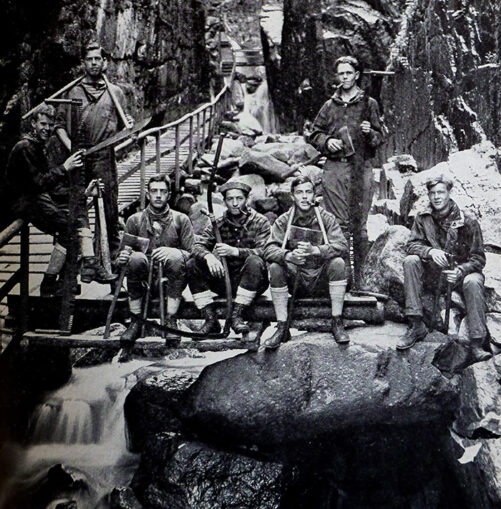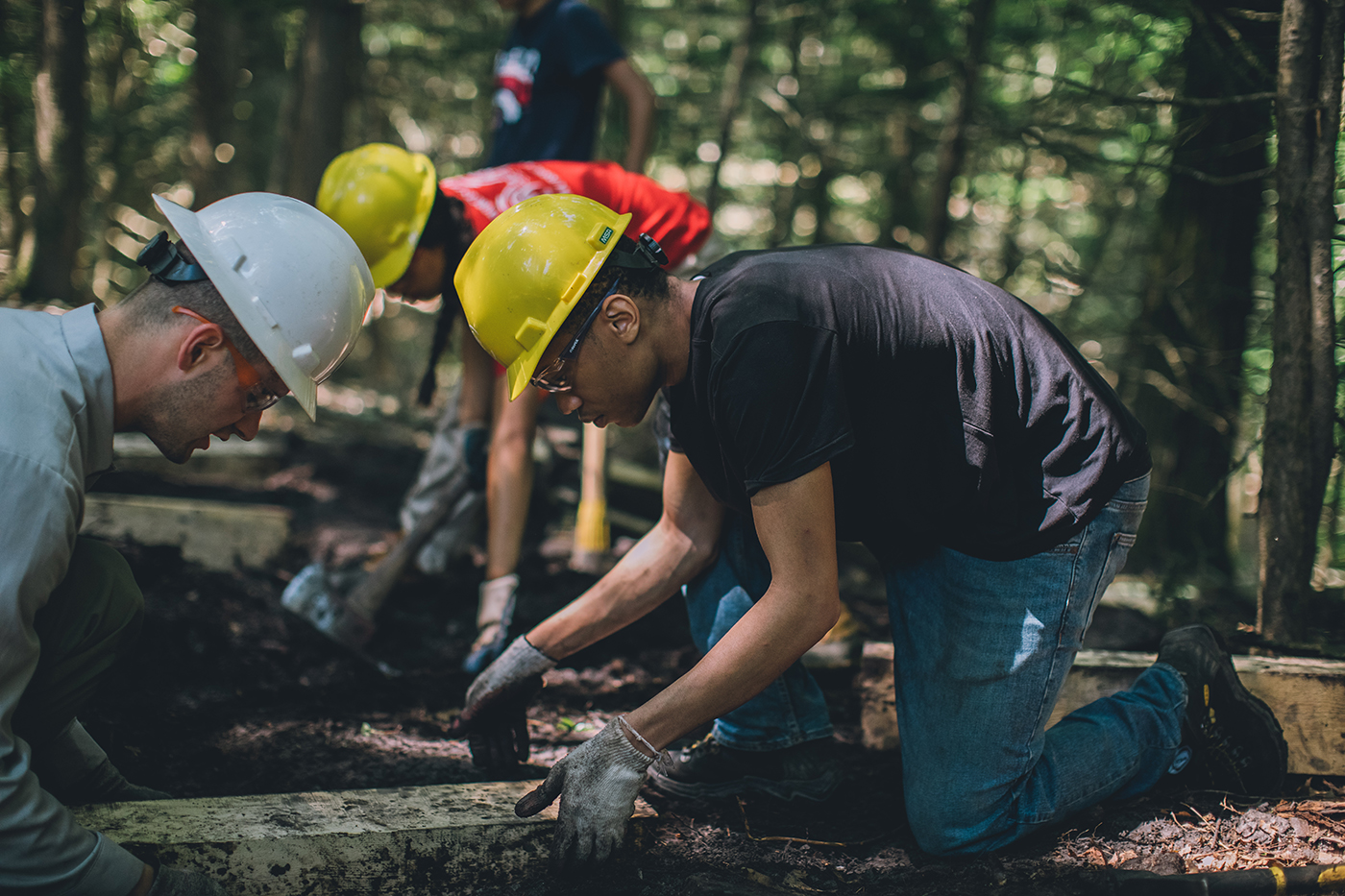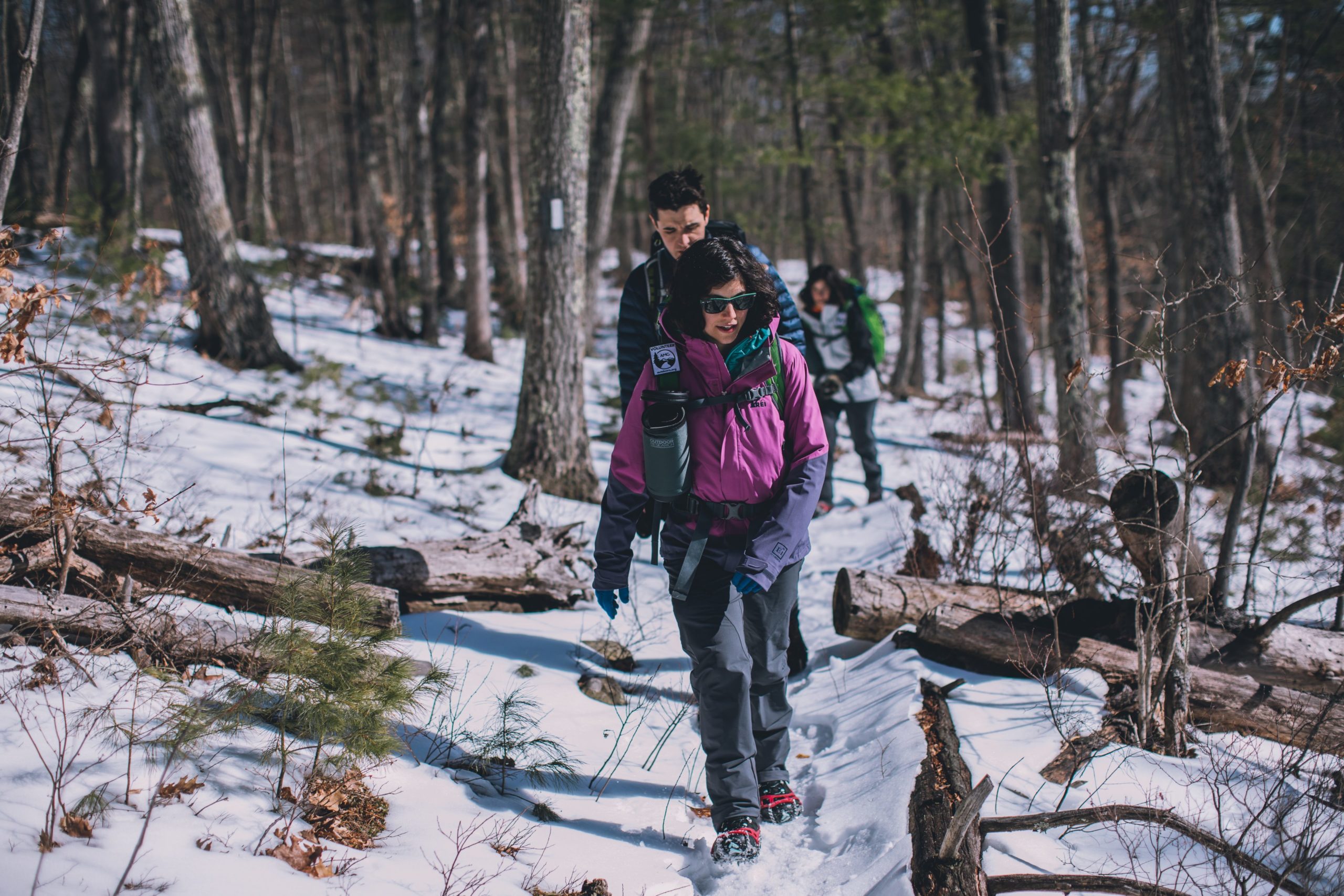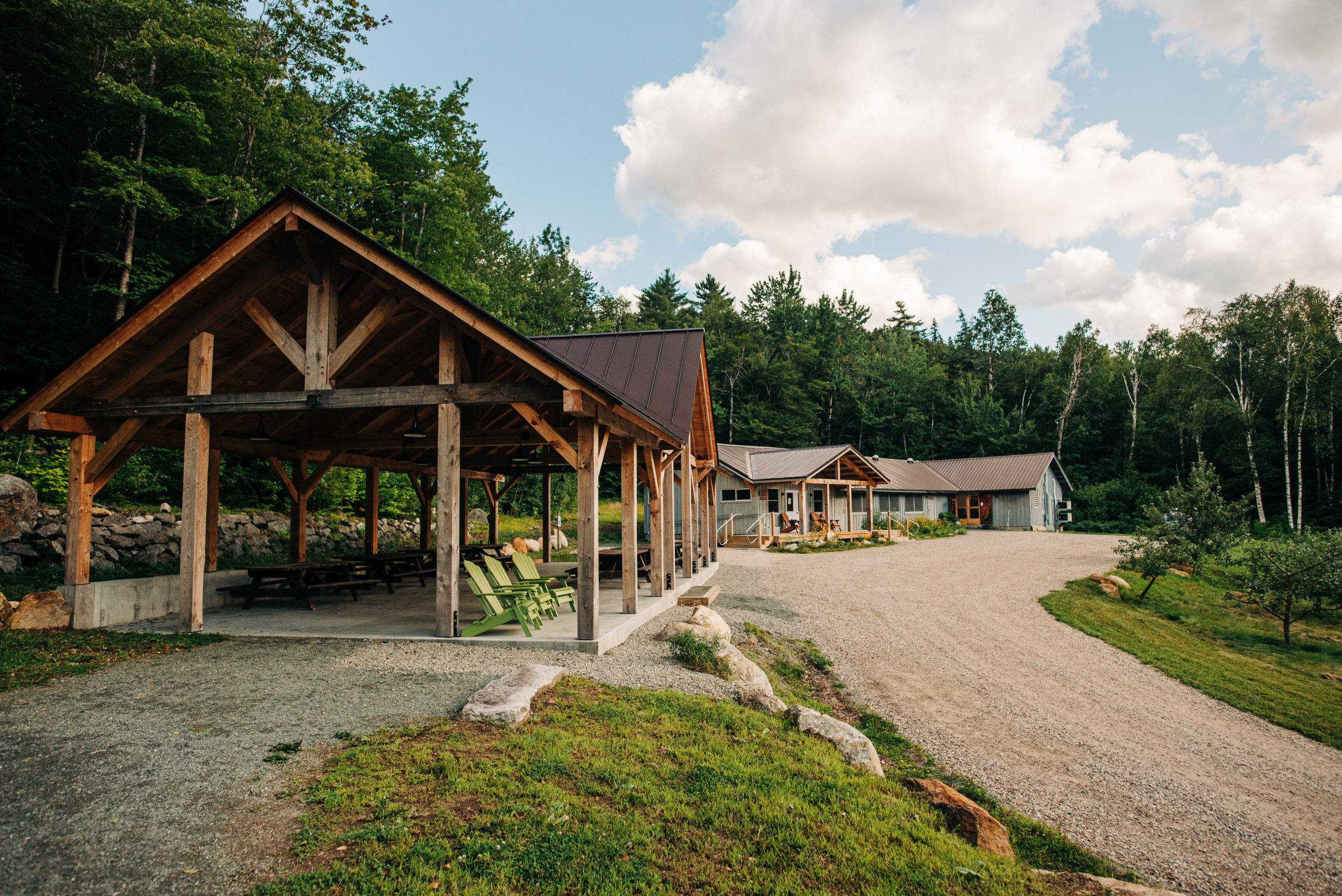
An AMC volunteer trail maintainer participates in a project on the Whitehorse Ledge Trail in New Hampshire’s White Mountain National Forest.
From Pennsylvania to the Canadian border, AMC develops, manages, and protects more than 1,800 miles of long-distance and regional trails, including trails easily accessible to urban and suburban populations. With your support, we work with countless land managers across ten states, support thousands of trails volunteers, and tackle everything from basic maintenance needs to technical trail projects on public lands.
“By protecting, restoring, and stewarding lands, trails, and forests, we are creating opportunities for sustainable outdoor experiences,” says Alex DeLucia, AMC’s director of trails.
A Legacy of Conservation

The 1924 AMC Professional Trail Crew.
At its core, AMC’s trail work is really about protecting natural resources and preserving the spaces residents of our region love and enjoy. The surge in visitor use in recent years directly correlates to greater recreation-related impacts on our public lands, DeLucia says. These impacts can vary from trash along the trail, to severe trail widening (when hikers leave the footpath), to fire damage.
Climate change only worsens the impacts from overuse. Storms and hurricanes are now stronger, wetter, and more frequent, resulting in washed-out trails, flooding, blown-down trees, and many disrupted adventures. Many trails in our region were built long before the understanding of erosion and recreation-related impacts, oftentimes cut straight up a mountain. AMC’s volunteer and professional trail crews now design trails with these impacts in mind, for instance by utilizing switchbacks or gentler grades to better control the flow of water.
Climate change is causing trail crews to look at trail stewardship in a new light. DeLucia says that while AMC’s trail crews and volunteers use what’s still relevant from traditional maintenance techniques, we’re increasingly integrating more modern techniques to improve resiliency of trails—such as splitting and shaping stones to construct new rock staircases in places like Whitehorse Ledge in Echo Lake State Park in North Conway, N.H., and on the Pine Hill Trail on Mount Wachusett in Princeton, Mass. AMC completely redesigned trails on Iron Mountain in the White Mountain National Forest and along the Appalachian Trail on Mount Prospect in North Adams, Mass., with more moderate grades.
“The combination of high visitor use, climate change, and a historic trail network across the Northeast and Mid-Atlantic are compounding the impacts on our public lands,” DeLucia says. “It takes scores of dedicated volunteers, staff, and supporters to maintain the integrity of our favorite places and ensure they will remain a valuable resource to all in the future.”

AMC Professional Trail Crew members work alongside volunteers on the Bay Circuit Trail in Boxford, Mass.
Seasoned Pros
As the country’s oldest professional trail crew, our century of expertise in trail construction, campsite planning and management, and mapping services are nationally recognized. AMC literally wrote the book on trail maintenance.
AMC is also nationally recognized for our campsite management and design of sustainable campsites. Our work showcases decades of experience in the layout, construction, and human waste management that are critical parts of a successful campsite.

Members of the AMC Worcester Chapter enjoy a hike along the New England National Scenic Trail in Massachusetts, which AMC helps maintain.
There’s a Trail Near You
Close-to-home trails provide opportunities to integrate hiking, biking, exercise, and connection to nature in one’s day-to-day life. Many of these trails are part of larger trail networks or greenways that offer new places to explore and can be used as alternatives to car travel. AMC members and supporters discover wild areas, community parks, and local history as they explore these trails. A few that AMC helped develop, maintain, or both, include:
Highlands Trail in Pennsylvania: A 300-mile multi-use trail network located within the 1.9 million-acre Pennsylvania Highlands Region. The Highlands Trail is part of a larger vision to develop a trail through the entire four-state Mid-Atlantic Highlands Region (Connecticut, New York, New Jersey, and Pennsylvania). In Pennsylvania, the Highlands Trail connects from the Delaware River west through 13 counties to the Maryland border near Blue Ridge Summit in Franklin County.
New England National Scenic Trail (NET): A 215-mile hiking trail route that has been in existence for more than half a century. The NET travels through 41 communities in Connecticut and Massachusetts and is comprised primarily of the historic Mattabesett, Metacomet, and Monadnock (M-M-M) Trail systems.
Bay Circuit Trail and Greenway: A 230-mile trail extending through 37 towns in Eastern Massachusetts linking parks and open spaces from Plum Island to Duxbury/Kingston Bay. It is a multi-use trail allowing hiking, trail running, backpacking, biking, horseback riding, cross-country skiing, snowshoeing, and paddling.
Connecticut River Paddlers Trail: A series of primitive campsites and access points along 410 miles of the Connecticut River from the river’s headwaters in New Hampshire to the Long Island Sound.

Located on U.S. Forest land, AMC’s newly constructed Camp Dodge is the starting point for much of the trail work that occurs in the White Mountains.
The Trail Ahead
In 2022, AMC trail crews are working on as many as 30 projects from Pennsylvania to northern Maine that range in length from two weeks to 16 weeks. These include the construction of trails at AMC Cardigan Lodge and in New Hampshire’s Silvio O. Conte National Wildlife Refuge that can be enjoyed by people with disabilities, and repairs to trails and shelters along the Appalachian Trail, among others.
“Our professional crews, AMC AmeriCorps crews, and staff-led trail volunteer programs will be more active on the trails than ever before” in 2022, says Chris Thayer, AMC’s director of government contracts and partner relations.
Supporting the conservation of vital lands and the responsible use of recreation areas comes in many forms. Whether through advocating for essential conservation funding or building and maintaining resilient trails, AMC is at the forefront of finding creative solutions to protect the outdoors.